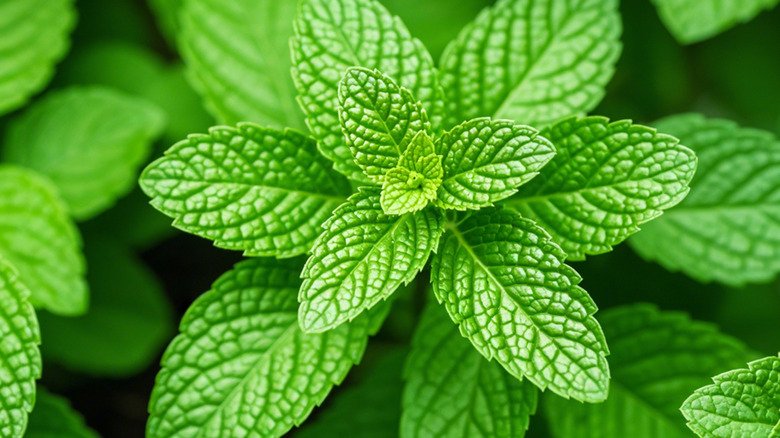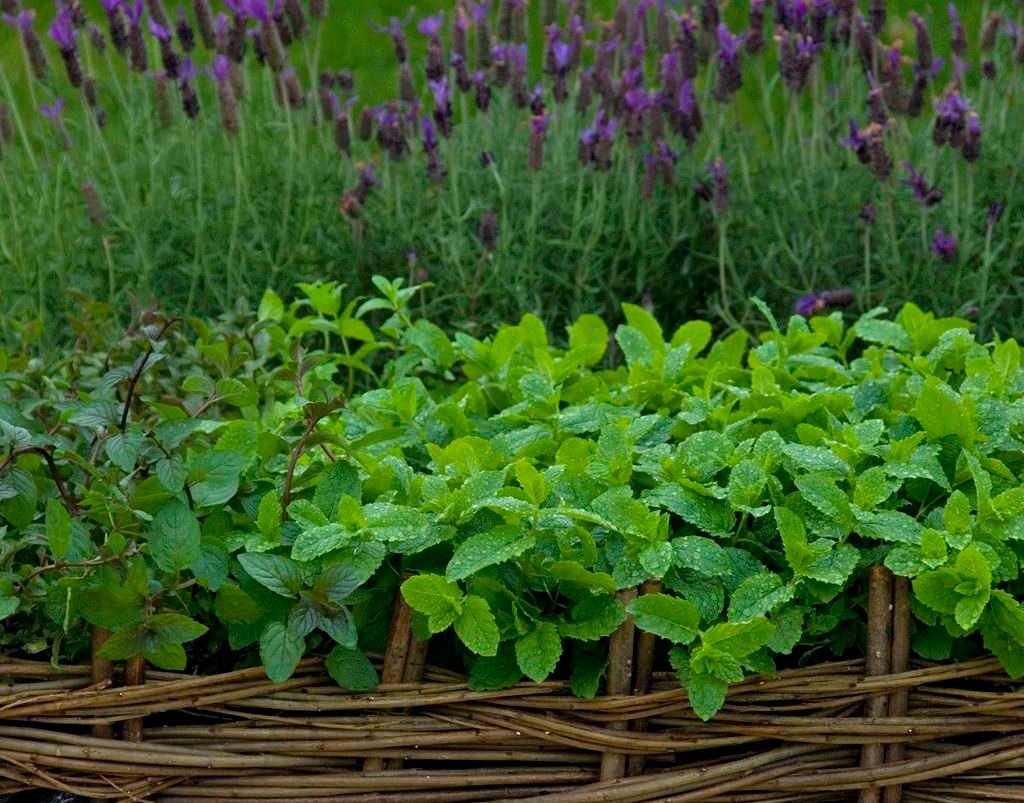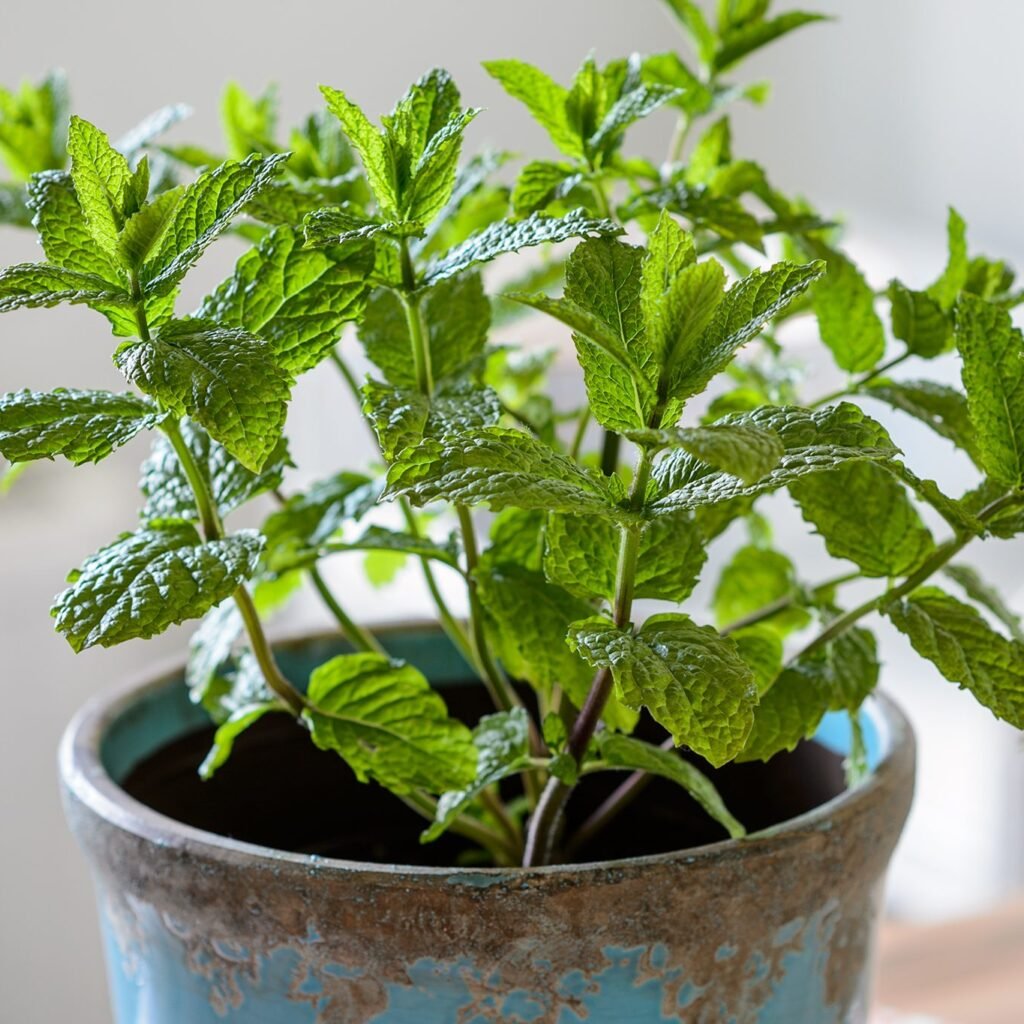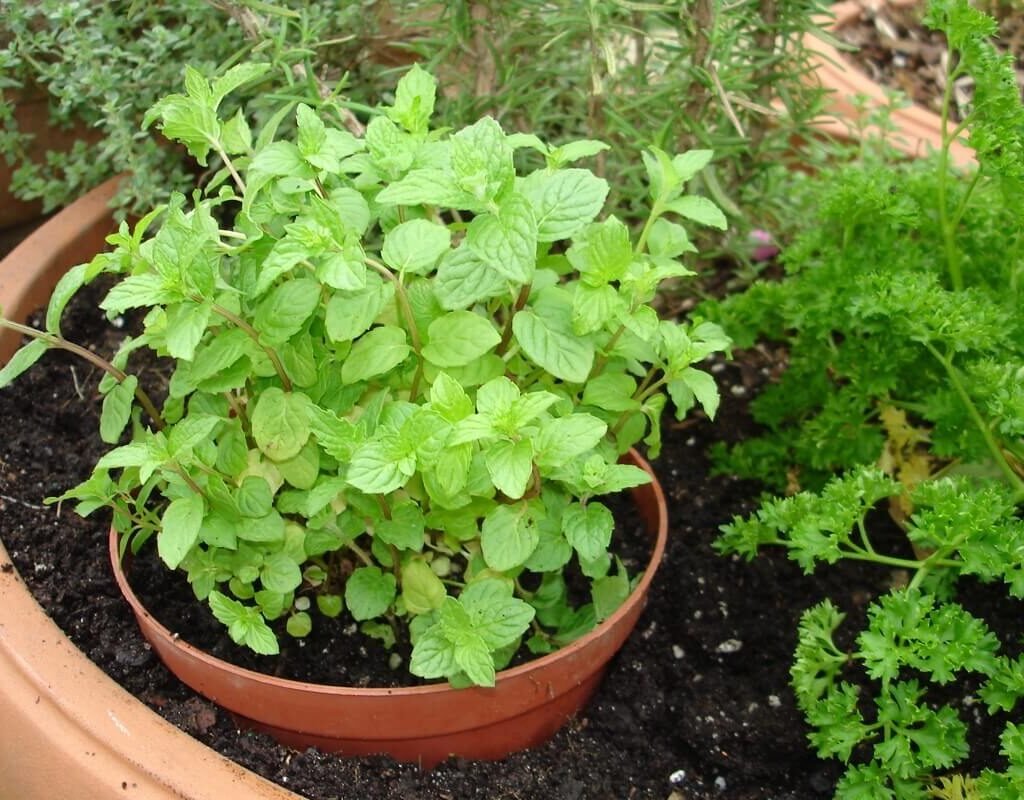Mint is one of the most popular herbs in home gardens—and for good reason. Its refreshing aroma, cooling flavor, and versatility make it a kitchen favorite. From garnishing salads and cocktails to brewing herbal teas and flavoring desserts, mint is a true superstar. But while it’s easy to grow, mint has a reputation for being a little too enthusiastic. Left unchecked, this herb spreads quickly, often taking over entire beds and crowding out other plants.
If you’ve ever planted mint directly in the ground, you’ve probably discovered how aggressive it can be. The good news? With the right approach, you can enjoy a healthy, abundant supply of mint without it turning into a garden invader.
In this guide, you’ll learn how to plant, grow, and harvest mint successfully—while keeping it neatly under control.
Why Mint Spreads So Quickly

Mint belongs to the Lamiaceae family (the mint family), which includes other vigorous growers like oregano and lemon balm. What makes mint especially invasive are its rhizomes—underground stems that spread horizontally and send up new shoots. These rhizomes can quickly fill an entire garden bed if left unchecked.
That’s why planting mint without some form of containment often leads to frustration for gardeners. However, with a little planning, you can enjoy mint’s benefits while keeping it manageable.
Choosing the Right Mint Variety

There are many types of mint, each with its own unique flavor and fragrance. Some of the most popular include:
- Peppermint: Strong, cooling flavor—great for teas and desserts.
- Spearmint: Sweeter and milder, commonly used in salads and beverages.
- Chocolate Mint: A delightful variety with a hint of chocolate aroma.
- Apple Mint: Fruity, mild flavor—perfect for summer drinks.
- Pineapple Mint: Variegated leaves with a subtle pineapple scent.
Choose a variety that matches your culinary needs. Keep in mind that different mint varieties can cross-pollinate if grown together, so plant only one type if you want to maintain pure flavor.
The Right Way to Plant Mint

1. Grow Mint in Containers
The simplest way to control mint is to grow it in pots. This keeps the roots contained while still allowing you to enjoy a lush supply.
- Container size: At least 12–14 inches wide and deep.
- Soil: Well-draining potting mix with compost.
- Placement: Full sun to partial shade (mint tolerates some shade better than many herbs).
- Watering: Keep soil consistently moist but not soggy.
If you want to place containers in your garden beds for a natural look, simply sink the pots into the soil, leaving the rim 1–2 inches above ground. This prevents the rhizomes from spreading beyond the container.
2. Use Barriers in the Garden
If you prefer to grow mint in the ground, install a barrier to contain its roots.
- Dig a hole and sink a bottomless container (like a large plastic pot or bucket with the bottom cut out) into the soil.
- Plant the mint inside the container, leaving 1–2 inches of the rim above the soil surface.
- This prevents roots from escaping and spreading underground.
3. Raised Beds for Mint
Mint also does well in raised beds, especially if grown alone or with other aggressive herbs. Be mindful not to plant it next to delicate herbs like basil or parsley.
Caring for Mint

Mint is low-maintenance, but a few simple practices will keep it healthy and flavorful.
Soil and Sun
- Mint prefers rich, moist, well-draining soil with a pH between 6.0 and 7.0.
- While it grows best in full sun, it tolerates partial shade, making it a flexible herb for many gardens.
Watering
Mint loves moisture. Keep soil evenly damp, especially during hot weather. Avoid letting the soil dry out completely, but don’t overwater to the point of sogginess.
Fertilizing
Mint doesn’t need heavy feeding. A light application of compost or a balanced organic fertilizer in spring will encourage lush growth.
Pruning and Maintenance
- Pinch back growing tips regularly to encourage bushier plants.
- Remove any flowers as soon as they appear—flowering makes the leaves less flavorful.
- Thin out plants in containers to prevent overcrowding.
Harvesting Mint
One of the joys of mint is how quickly it grows back after harvesting.
- Start harvesting when plants are about 8–10 inches tall.
- Cut stems just above a pair of leaves to encourage branching.
- Never remove more than one-third of the plant at once to avoid stressing it.
- Frequent harvesting actually stimulates more growth, keeping your plants full and productive.
Storing Mint
- Fresh: Store sprigs in a glass of water or wrapped in a damp towel in the refrigerator.
- Drying: Hang stems upside down in a dry, airy spot, then store in airtight jars.
- Freezing: Chop and freeze in ice cube trays with water for easy use in drinks and dishes.
Preventing Mint from Taking Over

Here are some tried-and-true strategies to keep mint under control:
- Grow in Containers: The easiest and most reliable method.
- Regular Pruning: Don’t let plants get out of hand—cut them back frequently.
- Root Trimming: In containers, remove the plant once a year, trim roots by one-third, and repot in fresh soil.
- Watch for Runners: Mint spreads by runners above and below ground—remove any escaping stems quickly.
- Choose Strategic Locations: Plant mint in areas where spreading isn’t a concern, such as a contained corner of the garden or a raised bed dedicated to mint.
Common Problems and Solutions
While mint is generally hardy, here are a few issues you may encounter:
1. Pests
- Aphids, spider mites, and flea beetles may attack mint.
- Solution: Spray with insecticidal soap, neem oil, or simply hose off pests with water.
2. Fungal Diseases
- Mint can suffer from rust, powdery mildew, or leaf spot in humid conditions.
- Solution: Ensure good airflow, avoid overhead watering, and thin crowded plants.
3. Weak Growth
- If leaves are small or pale, the soil may lack nutrients.
- Solution: Add compost or organic fertilizer to boost vigor.
Best Companion Plants for Mint
Mint pairs well with certain crops by deterring pests with its strong scent.
- Good companions: Cabbage, kale, tomatoes, and carrots (mint helps repel cabbage moths and carrot root flies).
- Poor companions: Parsley and chamomile—mint’s aggressive roots compete with delicate herbs.
Why Growing Mint Is Worth It
Despite its tendency to spread, mint is one of the most rewarding herbs to grow:
- Low Maintenance: Requires little effort once established.
- High Yield: Even a single plant provides abundant leaves.
- Culinary Uses: Perfect for teas, mojitos, salads, sauces, and desserts.
- Aromatic: Adds fragrance to gardens and indoor spaces.
- Pollinator-Friendly: Its flowers attract bees and other beneficial insects if left to bloom.
Final Thoughts
Mint’s vigorous growth may intimidate some gardeners, but with the right strategies, it can be one of the most useful and enjoyable herbs to grow. By using containers, root barriers, and regular pruning, you can keep mint under control while enjoying a steady supply of fresh, fragrant leaves.
Whether you prefer peppermint for soothing teas, spearmint for refreshing drinks, or a unique variety like chocolate mint for desserts, this versatile herb deserves a place in your garden—just with a little planning.
So, go ahead and plant mint this season. With these tips, you’ll enjoy lush harvests without letting it take over your garden!





